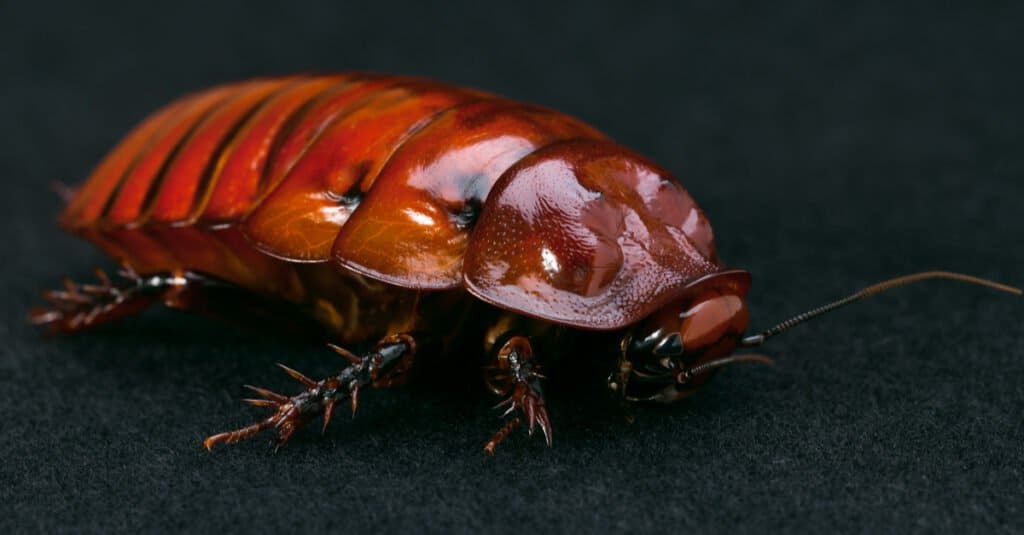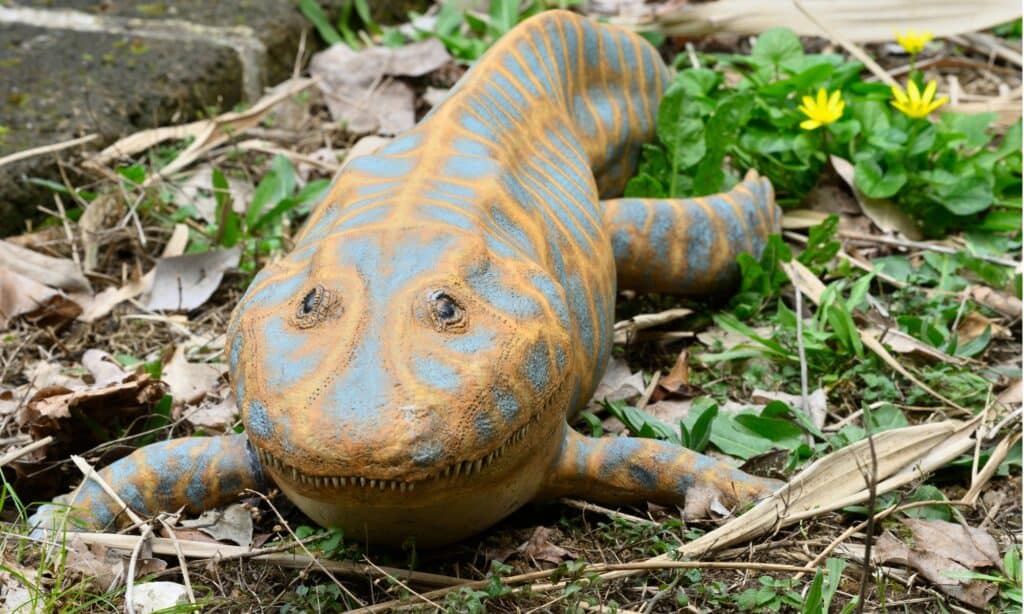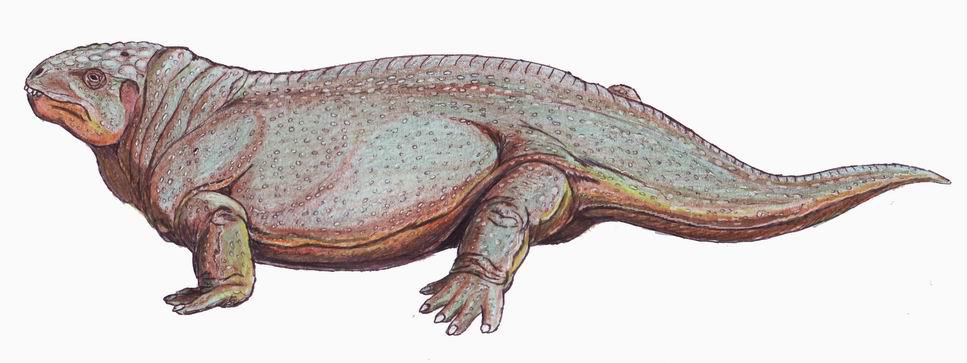The Paleozoic Era is aptly named “ancient life” in Greek because most of the incredible plants and animals that existed then do not exist now. The era started about 541 million years ago with the Cambrian explosion. Preceded by the Neoproterozoic Era and succeeded by the Mesozoic Era, it was the earliest of three geologic eras of the Phanerozoic Eon and was also the longest. The era lasted from 538.8 to 251.902 million years ago and was further divided into six geologic periods, namely:
- Cambrian Period
- Ordovician Period
- Silurian Period
- Devonian Period
- Permian Period
- Carboniferous Period

The long era ended with a major extinction event often known as the Permian-Triassic extinction. Since the Paleozoic kicked off with the most rapid and widespread diversification of life on earth (the Cambrian explosion), it was one of the most interesting eras in geologic history. Here is a list of the most prominent animals that lived and thrived during this era.
Cockroaches

Cockroaches are among the most successful groups of early terrestrial insects dominating a large part of the Carboniferous.
©skydie/Shutterstock.com
Although they’re among the most prolific household pests today, cockroaches actually predate humans by as much as 300 million years. Paleozoic arthropods were the ancestors of modern insects and crustaceans. In the Silurian, colonial corals birthed great coral reefs similar to what is sighted in tropical oceans today. These reefs bloomed with life, including predatory arthropods. It wasn’t until the Carboniferous that there was a good record of centipedes, millipedes, and other terrestrial insects.
Cockroaches are among the most successful groups among the early terrestrial insects-dominating a large part of the Carboniferous. They’re undoubtedly among the most incredible animals of the Paleozoic. In fact, the period is often called the age of the cockroach because fossils of this group of insects were the most popular from this period. The first major member of this group was known as Archimylacris egginton.
The earliest cockroaches were not remarkably different from their present-day companions in size and appearance. They would have looked like medium-sized cockroaches living in the warm swampy forests of Europe and North America.
Trilobites

Trilobites possessed advanced eyes and walked along the seafloor rather than swimming.
©iStock.com/Aunt_Spray
In reference to the Paleozoic Era, Trilobites are arguably the most successful invertebrates. They were also among the most incredible animals that lived during this time. These armored arthropods scuttled around seafloors for 270 million years before their extinction. They were present during the Cambrian but lived well into the Ordovician Period. They were a group of arthropods similar in size to horseshoe crabs. Their size ranged from a small coin to as big as the wheels of a modern car.
Trilobites possessed advanced eyes and walked along the seafloor rather than swimming. They were amongst the most diverse marine invertebrates during much of the Paleozoic, and more than seventeen thousand species have been described since their extinction.
Jawless Fish

Jawless fish of the Early Paleozoic are collectively known as the ostracoderms.
©Andrei Nekrassov/Shutterstock.com
Jawless fish are the oldest vertebrate fossils ever discovered. They first appeared during the Late Cambrian and became more extensive by the middle of the Paleozoic. Jawless fish of the Early Paleozoic are collectively known as the ostracoderms. The ostracoderms were characterized by a simple ring opening for their mouths, and they sifted food out of the mud, on the seafloor, or directly from saltwater. Their bodies had isolated bony scales and plates. Until the Late Cambrian, they were uncommon species operating as swimming bottom feeders.
The Silurian Period witnessed their population blossom throughout the seas, alongside mollusks and corals. By this period, they had developed armored head shields and body armor. The Devonian Period, however, witnessed their slow decline and eventual extinction. Traces of primitive jawless armored fish have been found in Late Cambrian rocks. This is a clear manifestation of the development of backboned animals during the Cambrian. Today, the jawless fish of the Paleozoic are survived by their lamprey and hagfish descendants.
Jawed Fishes

The placoderms lived from the Silurian to the Devonian period and were famous for their head and body armor.
©Warpaint/Shutterstock.com
Jawed fishes known as acanthodians emerged during the Silurian. They were fast-swimming predators that existed along with the placoderms. The placoderms lived from the Silurian to the Devonian period and were famous for their head and body armor.
Sharks were also first seen in the Silurian but survived into the Devonian Period. Placoderms and acanthodians would, later on, become extinct as ray bony fishes became dominant vertebrate predators. The Devonian Period was known as the age of fishes due to the rapid advancement and evolution of a wide assortment of fish types.
Ichthyostega

The earliest amphibians, such as the
Ichthyostega, had fins and skulls similar to the lobe-finned fish.
©iStock.com/AlessandroZocc
The lobe-finned fish gave rise to the first land vertebrates known as the amphibians, who first crawled to land at the end of the Devonian. The lungfish, a type of lobe-finned fish, still exist in freshwater environments.
The earliest amphibians, such as the Ichthyostega, had fins and skulls similar to the lobe-finned fish. They also evolved adaptations that allowed them to remain out of water for longer periods. One of these adaptations was nostrils and efficient lungs. They also developed limbs, a neck, and a tail. However, the Ichthyostega, like present-day amphibians, had to return to the water to breed and cool off.
Diadectes

lived during the early Permian Period (between 290 and 272 million years ago).
©Dmitry Bogdanov / CC BY-SA 3.0 – License
During the Devonian Period, the first set of vertebrates began to colonize the land. Known collectively as tetrapods, they were diverse in their lizard-like to snake-like appearances. Sizes ranged from 4 inches (0.33 ft) to 192 inches (16 feet) long. Even long before the evolution of birds, tetrapods had begun to lay eggs on the lands for the first time, becoming the first set of reptiles.
Diadectes lived during the early Permian Period (between 290 and 272 million years ago). Although they were not the only primitive tetrapods then, The Diadectes were among the first tetrapods that fed on plant matter. They were also among the first fully-terrestrial vertebrates to attain the large size many of their future ancestors would subsequently surpass. By the time the Permian Period ended, reptiles like the Diadectes had dominated the land fully.
Conclusion
The Paleozoic Era started with a biological big bang that allowed the diversity of many incredible animals. Over the course of several millions of years, the planet continued to reshape and evolve with booming biodiversity in the oceans and on land. Interestingly, the era ended dramatically as well, with an extinction event signaling the end of most of the animal life of the era and allowing the rise of new and more diverse organisms.
The photo featured at the top of this post is © Warpaint/Shutterstock.com
Sources
- Science Direct, Available here: https://www.sciencedirect.com/topics/earth-and-planetary-sciences/paleozoic-era
- University of California Museum of Paleontology, Available here: https://ucmp.berkeley.edu/paleozoic/paleozoiclife.html
- U.S. Department of the Interior, Available here: https://www.usgs.gov/youth-and-education-in-science/paleozoic
- Britannica, Available here: https://www.britannica.com/science/Paleozoic-Era
Thank you for reading! Have some feedback for us? Contact the AZ Animals editorial team.






